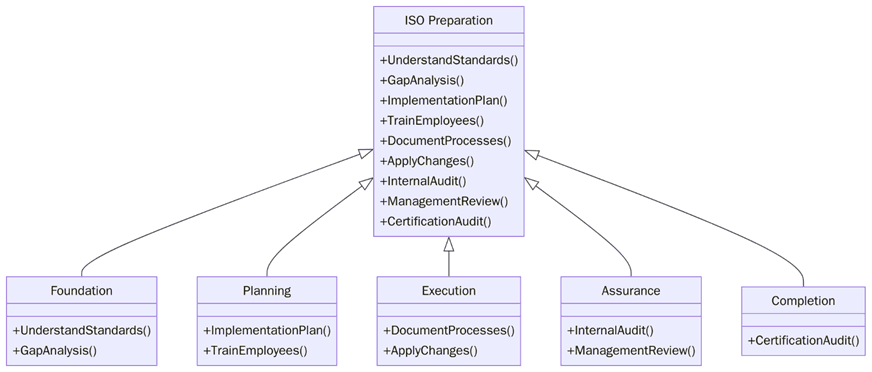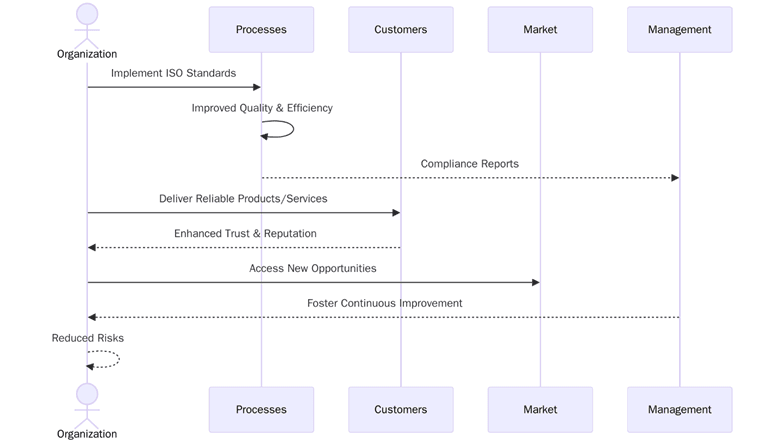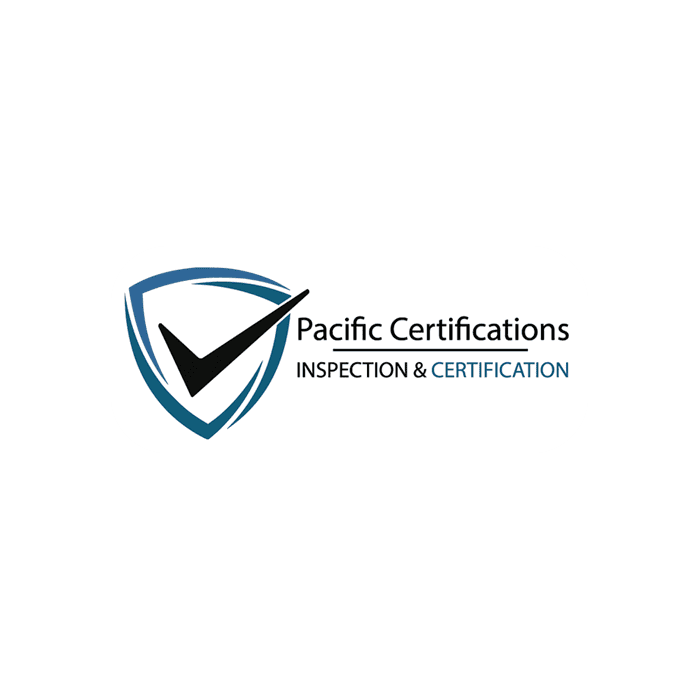The Most Common Mistakes During ISO Implementation - How to Avoid Them

ISO standards provide a fantastic pathway for any organization that is looking to expand credibility, smoothness, and compliance. However, the path to ISO certification is not without hurdles. Many companies, especially those that are considering ISO for the first time, make avoidable errors that hold up progress, increase cost and in some cases lose certification.
By being aware of the most common mistakes, organizations can save time and money preparing for ISO standards and have less struggle dealing with certification. In summary by conducting advanced diligence, involving leadership, employees and auditors from the beginning, organizations can implement ISO standards and build a smooth management system.
If your organization is preparing for ISO certification, reach out to us at [email protected] for accredited audit and certification services.
Introduction
ISO standards like ISO 9001 (Quality Management), ISO 14001 (Environmental Management), and ISO 45001 (Occupational Health & Safety) provide a pathway for continual improvement and accountability with processes that are recognized throughout the world. Implementing the standard requires sufficient attention to be taken, and it’s not as easy as just developing policies or pulling together documents.
The problem most organizational leadership encounter is treating ISO as a “tick-box exercise”. In effect, they think adopting one of the standards is enough to create useful, robust, systems. These leadership boards will generally discover that while their systems may pass a stage 1 and stage 2 audit, the systems are weak and will not provide long-term improvements. To avoid making some common mistakes, it is important to understand where other organizations get it wrong and how those mistakes can be avoided.
Why mistakes happen during ISO Implementation?
ISO implementation involves key requirements, and all of these aspects must align across leadership, staff, and processes. There are usually common mistakes organizations make, which generally include, but are not limited to, underestimating the effort, an obsession with certification rather than developing a real management system, not planning properly, not involving employees enough, and not understanding the requirements of ISO. Some organizations recognize that they are ready for ISO and then decide to secure it when it is too late because their clients apply pressure, often mistaking as an unnecessary imposition by big business. When this happens, the organization often implements the standard too fast, misses requirements, and has more audit nonconformities.
The most common mistakes during ISO Implementation
Below are the most frequent mistakes organizations make and how to avoid them:
1. Without management making ISO implementation a priority, employees can see ISO as a burden on the organisation rather than being an organisation-wide activity. This can be avoided by ensuring leadership creates policies, provides resourcing and engages in reviews.
2. Skipping the initial evaluation creates unrealistic goals and incomplete systems. It is important that management conduct an overreaching gap analysis to understand what improvement is required before they move on.
3. Some organisations create redundant paper work, while others will not document the important procedures. Awareness of ISO’s requirements and ensuring an organisation’s documents that will assist it operationally is all what is needed.
4. Employees are generally neglected in the planning of an ISO program which leads to low awareness and lack of system ownership. Engaging employees with training, communication and opportunities for them to improve processes will facilitate system buy-in.
5. Certification can be perceived as an ending rather than a continuous process. Building systems that embody continual improvement and program monitoring together with a regular internal audit process will go a long way toward achieving continual improvement.
6. ISO systems created without consideration of organisational objectives such as efficiency, compliance, customer satisfaction etc., seldom provide real or perceived value.
7. Some organisations fail to grasp the significance of an internal audit system and charge headlong into certification without sufficient preparation. Conducting regular internal audits will enable management to ascertain if the individual is in control and will allow them to respond early with appropriate corrective action or preventive action.
8. Focusing only on compliance without understanding and addressing risks undermines the system.
Identify risks and opportunities as part of the planning process, especially in ISO 9001 and ISO 45001 implementations.
Reach out to us at [email protected] for accredited audit and certification services.
How to prepare for successful ISO Implementation?
Avoiding mistakes starts with preparation. Organizations should:

- Conduct a gap analysis to compare existing practices with ISO requirements.
- Set realistic timelines that allow for training, documentation, and internal audits.
- Develop clear policies and objectives aligned with company strategy.
- Engage employees early by explaining how ISO will benefit both the business and their work environment.
- Leverage internal audits as a tool for improvement rather than a formality.
- Choose an accredited certification body to ensure audits are credible and recognized globally.
Certification Audit
The certification process identifies whether your system is smoothly implemented:
- Stage 1 Audit – Review of documentation, policies, and scope.
- Stage 2 Audit – On-site evaluation of implementation.
- Non-Conformities (NCRs) – Findings requiring corrective action.
- Surveillance Audits – Annual reviews to maintain certification.
- Recertification Audits – Conducted every three years for renewal.
By preparing properly and avoiding common mistakes, organizations can navigate this process confidently.
What are the benefits of Getting ISO Implementation Right?
Before listing the benefits, it’s important to highlight that avoiding mistakes ensures ISO becomes a long-term investment rather than a short-term achievement. Below are some of the benefits of successful ISO implementation:

• Processes are aligned, predictable, and reliable.
• Less instances of compliance failures, safety incidents, or quality issues.
• Structured systems remove effort and waste.
• Clients trust certified businesses that have strong, structured systems.
• Staff feel a part of a valuable process.
• Expanding ISO adds value beyond processes by generating income in new markets and industries.
Contact Us
Pacific Certifications provides accredited ISO certification services for organizations of all sizes. Our audits ensure compliance with international standards and help businesses avoid common mistakes during implementation.
To learn more or to begin your certification journey, contact us at [email protected] or visit www.pacificcert.com.
Ready to get ISO certified?
Contact Pacific Certifications to begin your certification journey today!
Suggested Certifications –
Read more: Pacific Blogs

